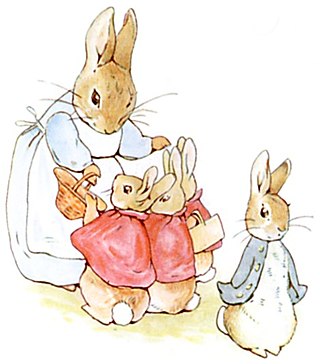
A picture book combines visual and verbal narratives in a book format, most often aimed at young children. With the narrative told primarily through text, they are distinct from comics, which do so primarily through sequential images.
Leo Dillon and Diane Dillon were American illustrators of children's books and adult paperback book and magazine covers. One obituary of Leo called the work of the husband-and-wife team "a seamless amalgam of both their hands". In more than 50 years, they created more than 100 speculative fiction book and magazine covers together as well as much interior artwork. Essentially all of their work in that field was joint.
Trina Schart Hyman was an American illustrator of children's books. She illustrated over 150 books, including fairy tales and Arthurian legends. She won the 1985 Caldecott Medal for U.S. picture book illustration, recognizing Saint George and the Dragon, retold by Margaret Hodges.

Leo Lionni was an Italian-American writer and illustrator of children's books. Born in the Netherlands, he moved to Italy and lived there before moving to the United States in 1939, where he worked as an art director for several advertising agencies, and then for Fortune magazine. He returned to Italy in 1962 and started writing and illustrating children's books. In 1962, his book Inch by Inch was awarded the Lewis Carroll Shelf Award.

The Rainbow Fish is a children's picture book drawn and written by Swiss author and illustrator, Marcus Pfister, and translated into English by J. Alison James. The book is best known for the distinctive shiny foil scales of the Rainbow Fish. Decode Entertainment turned the story into an animated television series of the same name, which aired on the HBO Family television channel in the United States and Teletoon in Canada from 1999 until 2000.
Vivian Gussin Paley was an American pre-school and kindergarten teacher and early childhood education researcher. She taught and did most of her research at the University of Chicago Laboratory Schools and was the recipient of a MacArthur Fellowship, as well as the author of numerous books.

The Stinky Cheese Man and Other Fairly Stupid Tales is a postmodern children's book written by Jon Scieszka and illustrated by Lane Smith. Published in 1992 by Viking, it is a collection of twisted, humorous parodies of famous children's stories and fairy tales, such as "Little Red Riding Hood", "The Ugly Duckling" and "The Gingerbread Man". The book won The New York Times Best Illustrated Book award, was a Caldecott Honor book in 1993, and has won numerous other awards in various countries.
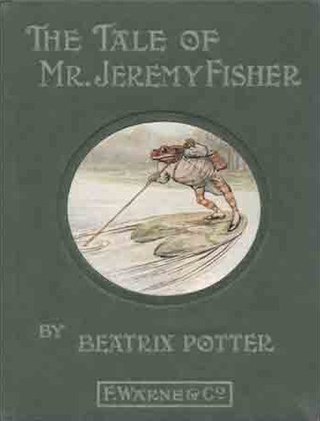
The Tale of Mr. Jeremy Fisher is a children's book, written and illustrated by Beatrix Potter. It was published by Frederick Warne & Co. in July 1906. Jeremy's origin lies in a letter she wrote to a child in 1893. She revised it in 1906, and moved its setting from the River Tay to the English Lake District. The tale reflects her love for the Lake District and her admiration for children's illustrator Randolph Caldecott.
Edward Randolph Emberley is an American artist and illustrator, best known for children's picture books.
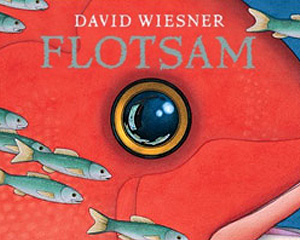
Flotsam is a children's wordless picture book written and illustrated by David Wiesner. Published by Clarion/Houghton Mifflin in 2006, it was the 2007 winner of the Caldecott Medal; the third win for David Wiesner. The book contains illustrations of underwater life with no text to accompany them.
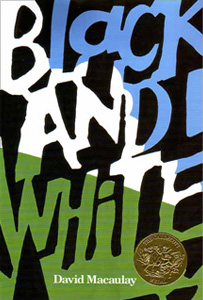
Black and White is a 1990 postmodern children's picture book by David Macaulay. Published by Houghton Mifflin Company, it received mixed reviews upon its release, but it was the recipient of the Caldecott Medal for illustration in 1991. The book tells four overlapping stories, each drawn with a distinct visual style. The four stories are "Seeing Things", about a boy on a train trip by himself, "Problem Parents", about siblings whose parents behave differently one night, "A Waiting Game", about people waiting for a train, and "Udder Chaos", about cows who escape and then return to their field.

Edmund Evans was an English wood-engraver and colour printer during the Victorian era. He specialized in full-colour printing, a technique which, in part because of his work, became popular in the mid-19th century. He employed and collaborated with illustrators such as Walter Crane, Randolph Caldecott, Kate Greenaway and Richard Doyle to produce what are now considered to be classic children's books. Little is known about his life, although he wrote a short autobiography before his death in 1905 in which he described his life as a printer in Victorian London.

Weston Woods Studios is a production company that makes audio and short films based on well-known books for children. It was founded in 1953 by Morton Schindel in Weston, Connecticut, and named after the wooded area near his home. Weston Woods Studios' first project was Andy and the Lion in 1954; its first animated film was The Snowy Day in 1964. In 1968, Weston Woods began a long collaboration with animator Gene Deitch. Later, they opened international offices in Henley-on-Thames, England, UK (1972), as well as in Canada (1975) and Australia (1977). In addition to making the films, Weston Woods also conducted interviews with the writers, illustrators, and makers of the films. The films have appeared on children's television programs such as Captain Kangaroo, Eureeka's Castle, and Sammy's Story Shop. In the mid-1980s, the films were released on VHS under the Children's Circle titles, and Wood Knapp Video distributed these releases from 1988 to 1995.

The Lion & the Mouse is a 2009 nearly wordless picture book illustrated by Jerry Pinkney. This book, published by Little, Brown and Company, tells Aesop's fable of The Lion and the Mouse. In the story, a mouse's life is a spared by a lion. Later, after the lion is trapped, the mouse is able to set the lion free. Adapting the fable, with the moral that the weak can help the strong, as a wordless picture book was seen as a successful way of overcoming the brief plot generally found in the source stories. While it was Pinkney's first wordless picture book, it was not the first time he had told the story, having previously included it in his Aesop's Fables, published in 2000. Pinkney, who had received five Caldecott Honors, became the first African American to win the Caldecott Medal for his illustrations in this book. His illustrations were generally praised for their realism and sense of place. The cover illustrations, featuring the title characters but no text, drew particular praise.
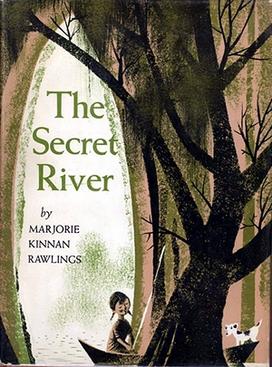
The Secret River is a children's fantasy novel by Marjorie Kinnan Rawlings, author of The Yearling. Published in 1955, The Secret River received a Newbery Honor Award. The first edition, illustrated by Caldecott Medal winner Leonard Weisgard, was issued after Rawlings' death. The book was revised and reissued in 2009 with illustrations by Caldecott Medalists Leo and Diane Dillon. The new edition received an international children's book design award in 2012. The Secret River is the only book Rawlings wrote specifically for children. The story of young Calpurnia, who goes on a quest to find a magical river and catch fish for her starving family and friends, it has two themes common in Rawlings' writing, the magic of childhood and the struggle of people to survive in a harsh environment.

This Is Not My Hat is a 2012 American children's picture book by the author and illustrator Jon Klassen. The story is told through the unreliable narration of a little fish, who has stolen a hat from a big fish and how the big fish reacts to the theft. It is a thematic follow-up to I Want My Hat Back (2011) and was meant to be a more literal sequel until Klassen took a suggestion to change which animals were in the story. The book was well received by critics, who praised its dark or ironic humor which could only be understood by comparing the words of the little fish's narration against the events of the illustrations. In addition to several positive reviews, Klassen received the 2013 Caldecott Medal and the 2014 Kate Greenaway Medal, making This is Not My Hat the first book to win both awards. This is Not My Hat was also a commercial success.
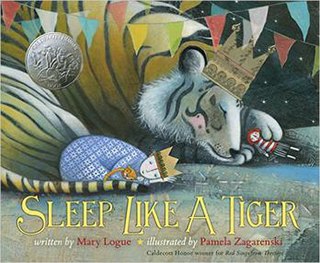
Sleep Like a Tiger, written by Mary Logue and illustrated by Pamela Zagarenski, is a 2012 picture book published by HMH Books for Young Readers. Sleep Like a Tiger was a Caldecott Medal Honor Book in 2013. Other works of Zagarenski are Red Sings from Treetops: A Year in Colors, which was also a Caldecott Medal Honor Book in 2010, and This Is Just to Say: Poems of Apology and Forgiveness, which is a 2008 Lee Bennett Hopkins Poetry Award Honor Book.

Bound for Glory is a 1956 album by Woody Guthrie and Will Geer. It consists of a selection of songs from Guthrie's Dust Bowl Ballads of 1940 and his Asch recordings of 1944–45, each introduced briefly by Geer with spoken relevant extracts from Guthrie's writings.

Wolf in the Snow is a 2017 wordless picture book by Matthew Cordell. The book was favorably received by critics and won the 2018 Caldecott Medal. The story has drawn comparisons to fairy tales like Little Red Riding Hood. The nearly wordless book tells the story of a girl and wolf who each get lost in the snowstorm. Cordell used distinctive illustration techniques for the girl and the wolf.

Big Al and Shrimpy is the title of a 2002 children's picture book, written by Andrew Clements and illustrated by Yoshi Kogo. Published by Simon and Schuster in 2002, it is the sequel to the 1989 children's book Big Al.
















